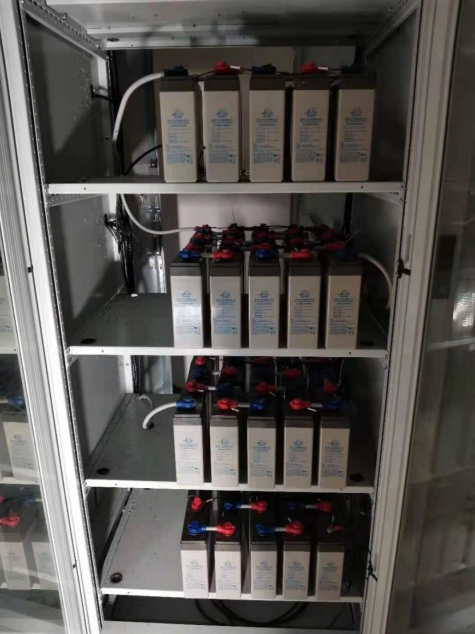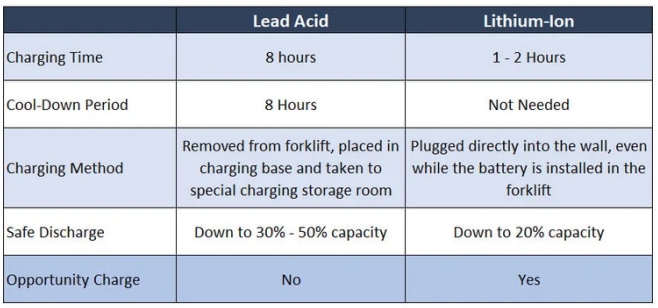In an emergency, telecom UPS batteries are the backbone of telecom system’s integrity. To avoid service interruptions during power outages and other emergencies, then reliable continuous backup telecom battery banks are necessary for emergency power,which protects data centers and industrial equipment from power outages by managing IT infrastructure and computer systems.
Lead-acid batteries and lithium-ion batteries are the two main types of batteries used in telecom due to factors like cost-effectiveness and improved discharge and charge efficiency, and longer life span. Thus the increased use of industrial batteries in the Telecom & Data Communication sector is expected to drive the Industrial Batteries Market. of USD 8065.5 million by 2028 with a CAGR of 4.4% during the review period.
Before the invention of lithium-ion batteries in the 1970s, lead-acid batteries were predominantly used in many applications. The lithium-ion battery has begun to dominate the lead-acid battery in the market as they are even more durable. The lithium-ion battery market is expected to show a 17.23% of CAGR from 2022 to 2027.
Both the lead-acid and lithium-ion batteries are rechargeable and can last long. In this article, let us discuss why lithium-ion battery are more and more used to take place lead acid battery in the new telecom battery bidding.

Outdoor 4G telecom base
1. What material used
Both Lithium-ion and Lead-acid batteries work on the same principle. The primary difference lies in the material used as cathode, anode, and electrolyte.The lead-acid battery consists of a set of electrochemical cells, each consisting of a lead (Pb) anode, a lead dioxide (PbO2) cathode, and a sulfuric acid (H2SO4) electrolyte solution. The electrochemical reactions within the cells involve the conversion of lead and lead dioxide to lead sulfate (PbSO4) upon discharging, and the reverse process during charging.

Lead-acid batteries of telecom base backup power
However, lithium-ion batteries comprise an anode typically made of graphite, a cathode made of lithium metal oxide (such as LiCoO2, LiFePO4, or LiNiMnCoO2), and an electrolyte composed of lithium salts dissolved in a solvent (usually a mixture of organic carbonates). The fundamental electrochemical process in these batteries involves the reversible intercalation and deintercalation of lithium ions between the anode and cathode materials.

LiFePo4 batteries of telecom base backup power
2. Cost
Lead-acid batteries are cheaper when compared to Lithium-ion batteries. The price of a lithium-ion battery is two times higher than a lead-acid battery with the same capacity. However, if you compare the life of the batteries, lithium-ion(5000-10000times ) lasts longer than a lead-acid battery(500-1000times). Hence, lead-acid batteries are cheaper only for short-term applications than lithium-ion batteries.
3. Battery energy density
Battery capacity is the amount of energy stored in a battery per unit volume. It is a direct indicator of the active material stored inside the battery. Lithium batteries have higher battery capacity when compared to lead-acid batteries.
Lead-acid batteries have a lower energy density (30-50 Wh/kg) and specific energy (20-50 Wh/L) compared to lithium-ion batteries (150-200 Wh/kg and 250-670 Wh/L, respectively).This indicates that lithium-ion batteries can store more energy per unit of weight and volume, making them more suitable for portable and lightweight applications.telecom bases usually stay in outdoor high mountain,the lithium batteries are more easier to transport and install.
4.Depth of Discharge (DoD)
Depth of Discharge indicates the maximum energy of a fully charged battery that can be used without recharging. If a battery's Depth of Discharge is 50%, you can use up to 50% of the battery capacity and recharge it. If you have used it more than 50%, the battery's life cycle will get affected. Lead acid batteries have a DoD range of approximately 50% to 80%. This means that, for optimal lifespan and performance, it's recommended to avoid discharging them below 50% of their total capacity.and 80% for lithium batteries, respectively. This means you can use the lithium-ion battery for a longer period without recharging. The modern li-ion battery that is manufactured today is even more efficient, with a DOD of 100%.
5.Lifespan
The durability of the battery is determined by the time duration it can last. Lead-acid batteries can last up to 2 years if well maintained, i.e. recharging it after 50% of the battery is utilized. If it is fully drained or above 80%, it can sustain only for 350 cycles or one year. Instead, a lithium-ion battery has a warranty period of 10 years and can sustain for 10,000 cycles.
6.Charging time
Lithium-ion batteries charge much faster than lead-acid batteries. If a lead-acid battery takes eight hours to charge, a lithium-ion battery would probably take less than two hours to charge, provided they both have the same capacity. Li-ion batteries are eight times faster than lead-acid batteries while charging. This is one of the reasons why lithium ion solar batteries are deployed in most EVs,forklift,AGV.Also lead acid batteries need cool down” period after charging,while li-ion batteries no need. So a typical charge or use cycle for a lithium-ion battery is 8 hours of use, 1 hour to charge and another 8 hours of use. No cool down period is needed. This allows the battery to be used continuously throughout a 24-hour shift, with downtime occurring only during short periods of opportunity charging. This can occur during workers’ lunch breaks or in between shift changes.
In contrast a typical charge and use cycle for a lead acid battery is 8 hours of use, 8 hours of charging and 8 hours of rest or cool down. This means a lead acid battery can only be used for one shift per day. If a company employs workers to cover two or three shifts, lead acid batteries must be swapped out. That means per vehicle or piece of equipment, two to three batteries are needed (one per shift).

7.Increased Insight from the BMS
Lithium batteries need a battery management system, or BMS, to operate. The BMS prevents operation of the battery outside of each cell’s safe operating conditions, balances the cells to prevent mismatch, and communicates battery parameters and operating conditions with the operator, typically via CAN networks. If the BMS senses a fault, it will automatically shut off the battery’s internal contactors disconnecting it from the machine to prevent damage and maintain safety.
8.Maintenance
Lithium batteries require very little maintenance compared to lead-acid batteries.while Lead-acid batteries require regular maintenance, including topping up the water levels and checking the charge levels.
Most telecom bases stay in remote high mountain ,so lithium battery can help reduce losts labour cost.
The ece energy offers a comprehensive range of telecommunication lithium-ion battery packs that are designed for remarkable performance, long-life, high-energy density and ease of installation, which makes them applicable for all types of telecom applications. The telecom lithium ion battery packs are specially designed to ensure hassle-free handling and maintenance-free operation, to offer space economy and also provide an eco-friendly solution.Since 2018,ECE Energy are one of stable supplier for China mobile,China Union ,China Tower with continiously supplying telecom base backup power lithium battery packs.
Install photovoltaic energy storage systems for your own home or company to save money and stabilize electricity consumption
Find a stable and reliable factory to assist you in expanding the market locally
Professional technical team and reliable energy storage products to provide a guarantee for your engineering project